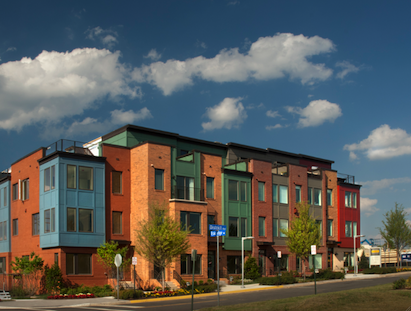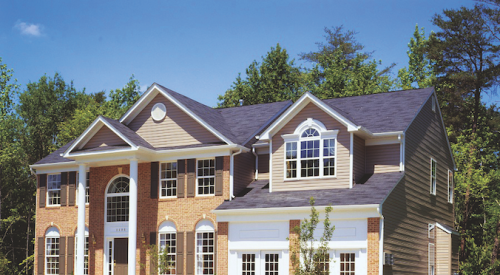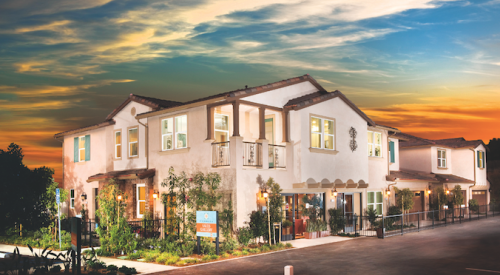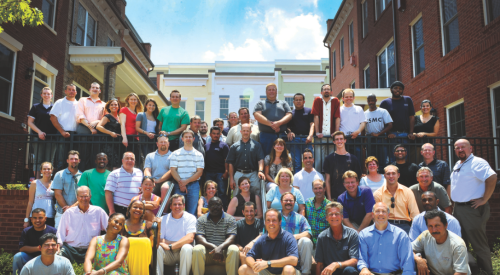Two thousand eleven may not have been a particularly banner year for the home-building industry, but, as our first annual list of Big Gainers suggests, there were plenty of firms that made significant strides in revenue growth last year. Of the 186 builders that reported two years worth of financial data for our annual Housing Giants report (published in the July 2012 issue of Professional Builder), 82 companies (44 percent) saw a gain in revenue from 2010 to 2011. Moreover, an incredible 76 percent of Housing Giant firms are projecting double-digit revenue growth in 2012.
Our 2012 Big Gainers list features the top 30 firms in terms of year-over-year revenue increases. The list includes relative newcomers like Denham Springs, La.-based DSLD (our 2011 Builder of the Year) and Columbus, Ga.-based Grayhawk Homes, as well as firms that have survived countless recessions and downturns. We reached out to a handful of builders on the list to have them share their successes and strategies for growth. Here’s what they had to say.
LGI Homes – The Spec-Home Specialists

For The Woodlands, Texas-based spec-home builder LGI Homes, the downturn certainly presented challenges, but even more opportunity. Using capital raised through private sources, including “friends and family” funding, the builder was able to snatch up finished lots throughout Texas at a discount. As a result, LGI was able to more than double its community count from four in 2010 to nine last year.
With the increased inventory, LGI then concentrated on building great product and applying its highly successful sales and marketing model in the new communities.
“We put a lot of manpower in our offices, so our closing volume per community is one of the highest in the country; We averaged a little over seven closings per community per month last year,” says Eric Lipar, LGI’s CEO. Each sales office has at least four reps at all times, and the builder invests heavily in advertising, targeting renters who may be looking to buy and need to move within 30 to 60 days.
The quick move-in is a huge selling benefit for LGI, as is the generous amount of “included upgrades” in its homes, like granite countertops, a covered back porch, tile floors, upgraded kitchen cabinets, and having all appliances included.
“The industry sentiment is that you can’t make as much margin on specs,” says Lipar. “Our belief is that specs command a premium, because when you have people calling that want to move in the next 30 to 60 days, that’s a premium, not a negative.”
As the land market in Texas begins to tighten, Lipar and his team are looking for opportunities elsewhere. Late last year, LGI closed on its first property in Phoenix and plans are in the works to acquire lots in the Tampa market by the end of the year.
EYA – Investing in Talent and Brand

Like most builders, Bethesda, Md.-based EYA was not immune to the effects of the housing downturn, even with its strong position in the relatively stable Washington, D.C., market. The slowdown forced the urban-infill builder to cut its staff size in half to 55 as sales slowed. However, in doing so, EYA president and co-founder Bob Youngentob made a crucial decision that is now paying dividends as the housing market bounces back — he kept his most experienced and valued team members on the payroll.
“It was hard to carry the overhead through that period of time, but we felt it was something we had to do because of the cyclical nature of the business,” he says. As the market started to turn, EYA had the team in place to execute complex urban rowhome and townhome developments, which typically have unique site and design challenges, as well as long, intricate entitlement and permitting processes.
EYA also took advantage of the downturn to increase awareness of its brand though advertising, social media, and a new website. “We spent a lot of money on advertising in our metro system, buying ads on kiosks and metro cars to create buzz around the concept of being able to walk from metro stations to your house,” says Youngentob.
EYA’s strategic moves during the downturn resulted in the builder bouncing back to its pre-recession performance, thanks to 24 percent growth in revenue last year.
Looking forward, Youngentob says growth strategies include getting into more public-private partnerships, expanding its multi-family business, and looking for nontraditional sources of land. “For instance, we’re in the process of converting an existing office building to high-end multi-family,” he says.
[PAGEBREAK]
Grayhawk Homes – Making the Most of Opportunities

For Columbus, Ga.-based Grayhawk Homes, success in 2011 was the result of months of ramping up operations for a coming surge in buyers to the area. Years earlier, the U.S. Department of Defense announced that as many as 30,000 military personnel and families would be relocated to nearby Fort Benning as part of a BRAC expansion. This presented a prime opportunity for local builders like Grayhawk.
“Having an opportunity is one thing; being prepared for it and taking advantage is another,” says David Erickson, president of Grayhawk Homes. To capitalize on the increased demand for new homes in the area, Erickson beefed up his staff and nearly doubled the number of lots in company’s pipeline. “We were prepared to do as many as 400 houses per year; we had the lots in the supply chain, staff on board, the systems ready to go,” he says. “We ended up selling 248.” The strategy paid off to the tune of 67 percent growth to $61 million.
The challenge for Grayhawk is sustaining its growth in a market that, while stable due to its proximity to Fort Benning, has its limitations. The BRAC expansion program expired last September, and Erickson is now seeing a slowdown in the number of soldiers being relocated to the base. Looking for opportunities, Erickson and his team have turned their attention 1,000 miles north to Des Moines, Iowa, where a failed partnership with a developer led the builder to discover real estate deals there, including a fire sale of the assests from Rottlund Homes, which closed its doors last fall.
Erickson still envisions Grayhawk becoming a 400-home builder one day. “We’re going to fall back to a sustainable level of about 200 houses per year in Columbus, but we have a chance to get to 200 a year in Des Moines by maybe 2015,” he says.
Lombardo Homes – Staying Aggressive Through the Downturn

Grow or die. That’s the general attitude that encapsulates Lombardo Homes’ strategy for navigating the housing downturn and recovery. At a time when many of its competitors cut back or went out of business, the Shelby Township, Mich.-based production builder invested heavily in its operations and products, targeting key talent from other builder firms; aggressively buying land in strategic locations; expanding into the St. Louis market; and launching a custom division. By having a no-fear mindset and long-term strategy, the builder was able to grow revenue 32 percent last year.
“I wouldn’t attribute our success to simply our land position, processes, people, or expansion — it was a combination of all of those things,” says Michael Van Pamel, president of Lombardo’s new St. Louis division. He says the builder leveraged its strong, 50-year history and healthy banking relationships to acquire land in “A-plus” locations in both St. Louis and Michigan. They then made it as easy as possible for potential buyers to purchase one of their homes, offering creative solutions like a “trade-in, trade-up” option (via provider MarketPlace Homes) for homeowners who are either underwater on their mortgage or can’t sell their existing home.
“The MarketPlace partnership has allowed us to target a percentage of the population that wouldn’t likely be buyers without it,” says Van Pamel, noting that about a quarter of the builder’s customers in recent years have used the program.
Heading into 2013, Van Pamel says to expect more of the same from Lombardo, especially in the areas of land acquisition and organizational development. “Investing in our people has been valuable to our customers and our performance,” he says.
DSLD – Healthy Geographic Expansion

Coming off a year when it experienced an incredible 57 percent growth in revenue, Denham Springs, La.-based DSLD nearly doubled its revenue in 2011, to more than $115 million. In just three years as a start-up, the builder has gone from zero to 687 annual closings across some 45 communities in south Louisiana and Mississippi. And the company is forecasting another 36 percent jump in revenue in 2012. DSLD managing member Saun Sullivan says the keys to the company’s rapid growth are its ability to acquire lots in high-demand locations; its fundamental, no-frills approach to production home building; and its customer-first motto in business.
“We’ve been able to grow because of the people we took care of the year before,” says Sullivan. “We have a 40 percent referral rate, so four out of every 10 buyers got there as a result of talking to somebody who bought a house from us.”
The builder also stepped up efforts in the areas of sales management and training, hiring consultant Jason Forrest to improve the team’s sales processes and performance. “We never wanted a crew that could sell ice to Eskimos, but we wanted a crew that could advocate for our houses and still be advocates for our customers,” says Sullivan.
For 2013, he says the firm is focused on increasing the number of sales per subdivision by adding new product to cater to buyers that they normally would not attract. DSLD is also planning to offer buyers more options, including electrical upgrades, enhanced lighting packages, and paint options. “They’re not big options, but they give people more of a feel that they’re customizing their house,” says Sullivan.













